The Lafayette Metro Story: Told by STATS Indiana
This is the eighth in a series of articles on Indiana's metropolitan statistical areas (metros). All the data used in this article can be found using the USA Counties and Metros Side-by-Side feature on STATS Indiana (www.stats.indiana.edu).
The Area
The Lafayette metro area in Indiana consists of three Hoosier counties: Benton, Carroll and Tippecanoe. These three counties made up 3 percent of Indiana's 2007 population with more than 192,000 residents. The Lafayette metro growth rate has been mostly on par with the U.S. growth rate, experiencing an increase in population of 21 percent since 1990 (the U.S. rate during that time was 21.2 percent).
The median age in the Lafayette metro (29.2) is much lower than the state median age (36.3) and the national median age (36.4). Looking at the population by age data, we see a disproportionate number of college-age students in the Lafayette metro because of Purdue University in Tippecanoe County (see Figure 1). The metro's population by age data looks almost identical to the numbers shown in Figure 1 of the Bloomington metro article.1 It is for the same reason that per capita personal income (PCPI) numbers look so low for the Lafayette metro. In 2006, PCPI in the metro was about $27,700. Compare that to Indiana at $32,288 and the United States at $36,714. The close proximity of a major university also contributes to the higher percentage of residents with a bachelor's degree or higher (see Figure 2).
Figure 1: Population by Age as a Percent of the Total Population, 2006
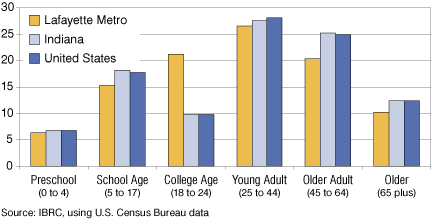
Figure 2: Educational Attainment as a Percent of All Adults 25 and Older by Geography, 2000
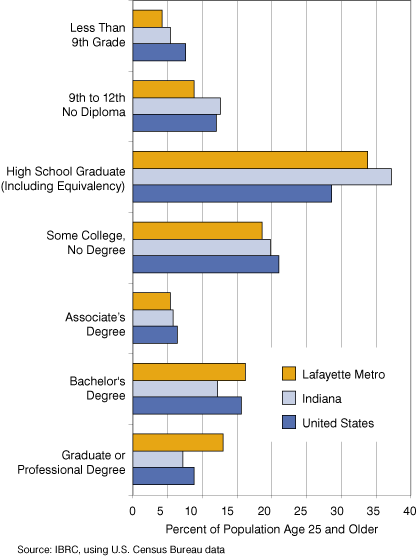
Students also affect housing in the Lafayette metro. Of the occupied housing units in the metro, 40.2 percent were renter-occupied. The nation had about one-third of its occupied housing units filled with renters and Indiana only had 28.6 percent. We see the same pattern when looking at residential building permits filed in 2007. The metro had a lower proportion of single-family permits than both the state and nation and a higher proportion of permits for five or more families.
Jobs and Wages
Figure 3 shows that jobs in the Lafayette metro have generally followed the state and national trends. Percent changes from the previous year were a little more volatile in the metro than the state or nation, but some of that can be expected given the smaller denominator in the smaller geography.
Figure 3: Percent Change in Jobs from the Previous Year
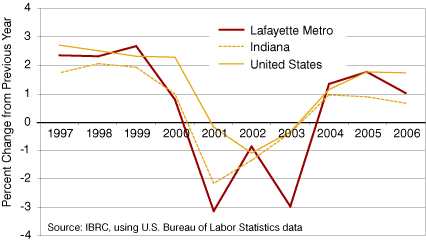
As far as jobs are concerned, the usual industries are among the top three in the Lafayette metro, Indiana and the United States: manufacturing, retail trade, and health care and social assistance. About one in every five workers in both the metro and Indiana had a manufacturing job in 2006. That figure dropped by nearly half for the United States, where slightly more than one in every 10 workers had a manufacturing job (see Figure 4).
Figure 4: Jobs as a Percent of Total Covered Employment in the Lafayette Metro, Indiana and the United States, 2006
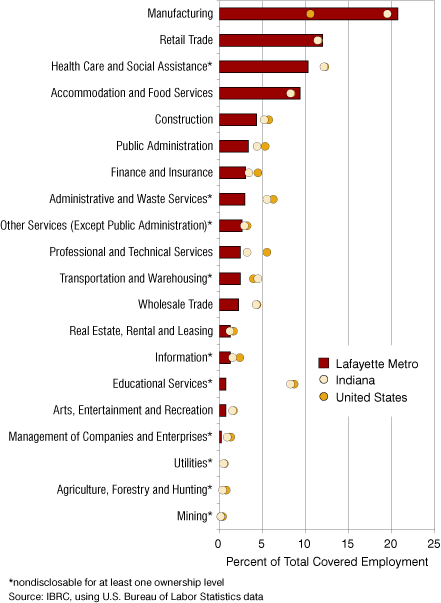
Wages in the Lafayette metro were consistently lower than the state and nation from 1996 to 2006. Looking only at the industries where nondisclosure didn't kick in, we see that the largest differences between the metro and the United States were in the finance and insurance and professional and technical services industries. Workers in finance and insurance averaged about $35,500 more per year nationwide than those in the Lafayette metro. For professional and technical services, workers in the metro averaged about $41,300 per year compared to $68,400 at the national level. If we ignore nondisclosure, we find that agriculture, forestry and hunting was the only industry in the metro to pay higher wages than the United States. When compared to Indiana, however, there were three industries in the metro that paid higher wages: agriculture, forestry and hunting; transportation and warehousing; and health care and social assistance (see Figure 5).
Figure 5: Average Wage per Job by Industry, 2006
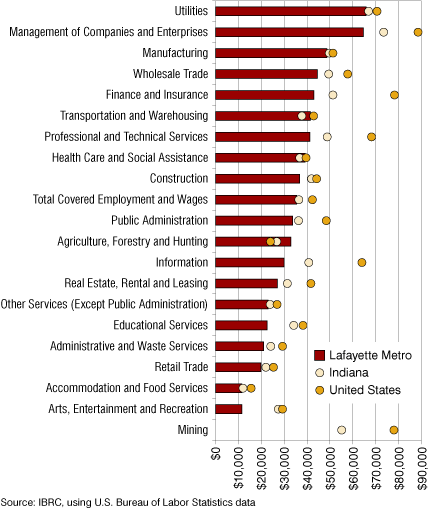
Conclusion
The large student population in the Lafayette metro affects the regional economy. Again, we see a younger population when compared to the nation, a higher percentage of workers in accommodation and food services, and lower reported wages. If compared to similar college-town metros, the Lafayette metro appears fairly typical.
Notes
- Molly Manns, “The Bloomington Metro Story: Told by STATS Indiana,” InContext, April 2008. Available online at www.incontext.indiana.edu/2008/april/6.asp.
Molly Manns, Communications Specialist
Indiana Business Research Center, Kelley School of Business, Indiana University
